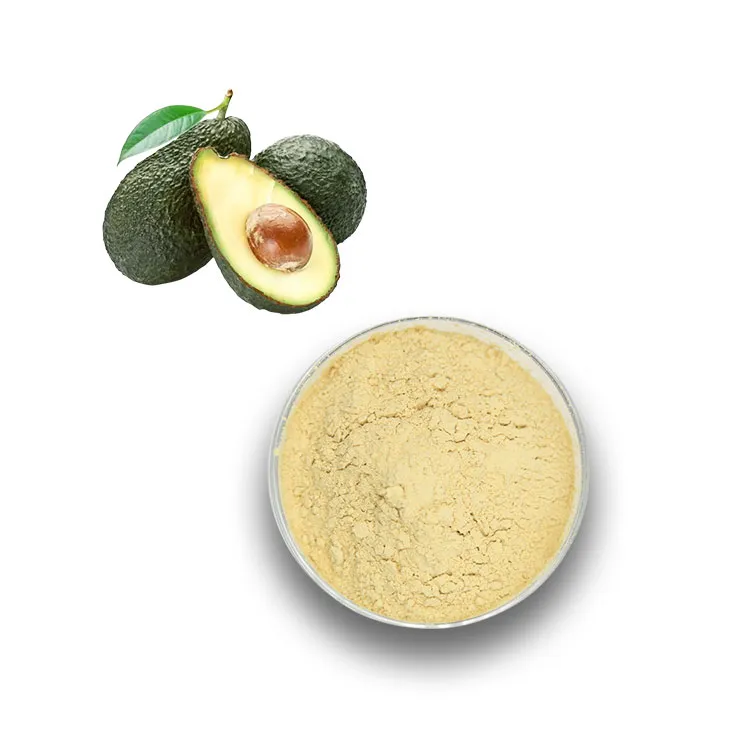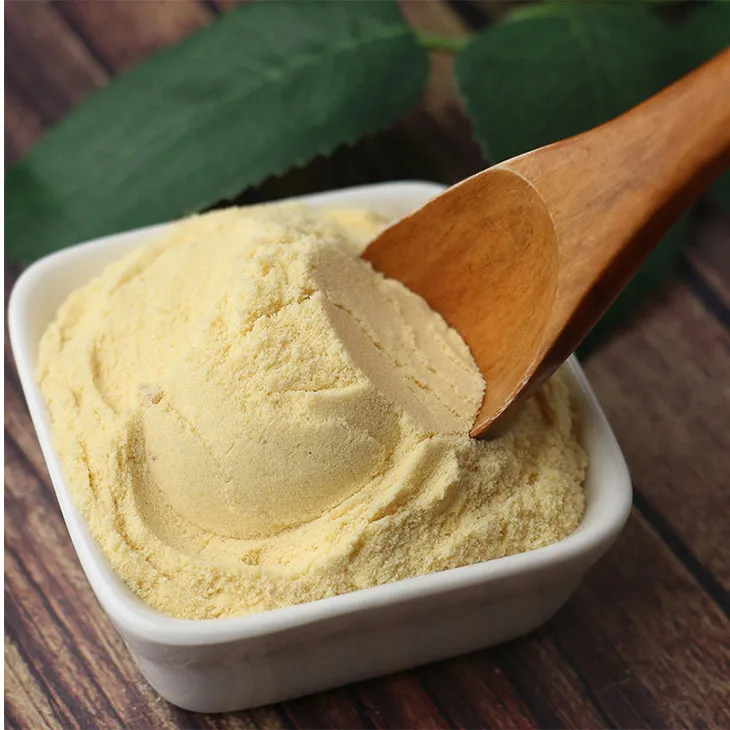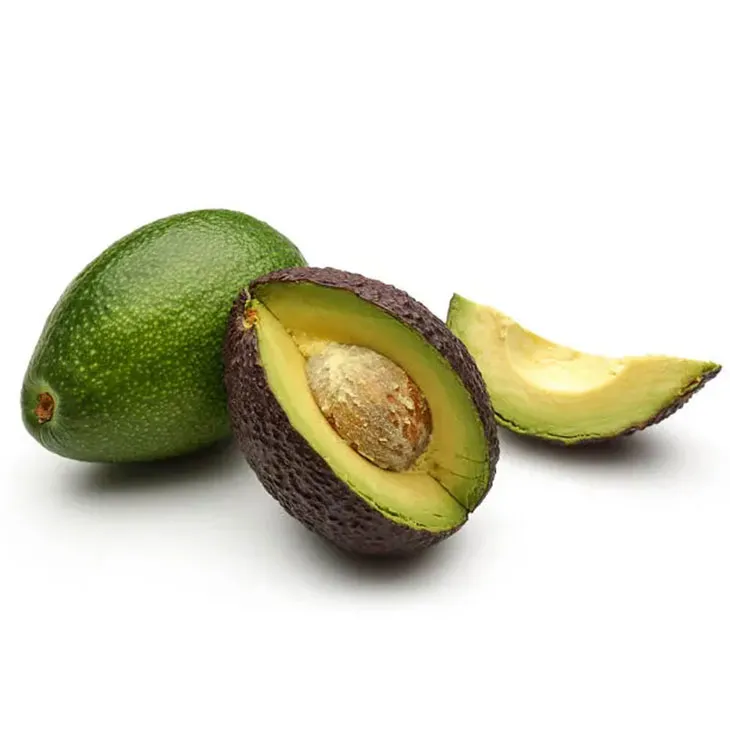- 0086-571-85302990
- sales@greenskybio.com
The process of extracting avocado oleic acid from avocado extract powder.
2024-11-29

1. Introduction
Avocado has been recognized as a highly nutritious fruit, and its extract powder is a valuable source for various bioactive compounds. Among these, oleic acid stands out due to its numerous beneficial properties. The extraction of avocado oleic acid from Avocado Extract Powder is a process that has drawn significant attention in both the food and cosmetic industries. This article will delve into the detailed process of this extraction, starting from the initial preparation to the final purification steps.

2. Properties and Significance of Oleic Acid
Oleic acid is a monounsaturated omega - 9 fatty acid. It has a chemical formula of C18H34O2. In the food industry, oleic acid is known for its positive effects on heart health. It can help in reducing bad cholesterol levels and has antioxidant properties. In the cosmetic industry, oleic acid is used in skincare products as it is easily absorbed by the skin and can help in moisturizing and softening the skin. Therefore, the extraction of oleic acid from Avocado Extract Powder is of great importance for these industries.

3. Avocado Extract Powder as the Starting Material
3.1 Preparation of Avocado Extract Powder
Avocado extract powder is obtained through a series of processes. First, fresh avocados are harvested. They are then washed thoroughly to remove any dirt or contaminants. The avocados are peeled and the pulp is separated. The pulp is then dried, either through air - drying or using a drying machine at a controlled temperature. After drying, the pulp is ground into a fine powder. This powder is rich in lipids, including oleic acid, and serves as the starting material for the extraction process.3.2 Composition of Avocado Extract Powder
Avocado extract powder contains a variety of components. Besides oleic acid, it also has other fatty acids, vitamins (such as vitamin E), and minerals. The lipid content in the powder can range from 15 - 30% depending on the variety of avocados and the extraction method used for obtaining the powder. However, for the purpose of oleic acid extraction, the focus is on separating oleic acid from the other components present in the powder.
4. Solvent Extraction
4.1 Selection of Solvents
Solvent extraction is a crucial step in the process of extracting oleic acid from avocado extract powder. Ethanol is a commonly used solvent in this process. It has several advantages. Firstly, it is relatively safe compared to some other solvents. It is also considered more environmentally friendly as it is biodegradable. In addition to ethanol, other solvents such as hexane can also be used. However, hexane has some safety concerns due to its flammability and potential toxicity. When considering the overall extraction process, the choice of solvent depends on factors such as the efficiency of extraction, safety, and environmental impact.4.2 The Extraction Process
Once the solvent is selected, the avocado extract powder is immersed in the solvent. The ratio of powder to solvent is an important factor that can affect the extraction efficiency. A typical ratio could be 1:5 (powder to solvent by weight). After immersion, mechanical shaking or stirring is carried out. This helps in increasing the contact between the powder and the solvent, facilitating the transfer of oleic acid from the powder to the solvent phase. The shaking or stirring can be carried out for a period of 1 - 3 hours at a constant speed. This time period allows for sufficient extraction of oleic acid without causing excessive degradation of other components in the powder.
5. Filtration
After the solvent extraction process, the next step is filtration. The purpose of filtration is to remove any undissolved particles from the solvent - oleic acid mixture. Filtration can be carried out using a filter paper or a membrane filter. A filter paper with a pore size of 0.45 - 1 μm is commonly used. The filtration process is carried out under gentle pressure or vacuum to ensure a smooth flow of the filtrate. The undissolved particles, which may include remnants of the avocado extract powder and other insoluble substances, are retained on the filter, while the filtrate, which contains the oleic acid - solvent mixture, passes through and is collected for the next step.
6. Separation of Solvent from Oleic Acid
6.1 Rotary Evaporation
The filtrate obtained from filtration contains the oleic acid - solvent mixture. To obtain the oleic acid in a more concentrated form, the solvent needs to be removed. Rotary evaporation is a commonly used method for this purpose. In a rotary evaporator, the filtrate is placed in a round - bottomed flask. The flask is then rotated and heated gently while a vacuum is applied. The solvent evaporates under reduced pressure and is condensed and collected separately. The temperature and pressure settings during rotary evaporation are critical. For ethanol as the solvent, a temperature of around 40 - 60°C and a pressure of 10 - 50 mbar are typically used. This process results in a concentrated form of oleic acid, but it may still contain some impurities.6.2 Other Separation Methods
Besides rotary evaporation, other methods can also be used for solvent - oleic acid separation. For example, distillation can be carried out. However, distillation may require more complex equipment and higher energy consumption compared to rotary evaporation. Another method is solvent extraction with a second solvent that has a different solubility for oleic acid. This method can be used for further purification of oleic acid but also adds complexity to the overall process.7. Purification of Oleic Acid
7.1 Fractional Crystallization
To meet high - quality standards, additional purification procedures are often necessary. Fractional crystallization is one such method. In this process, the concentrated oleic acid obtained from the previous step is cooled slowly. As the temperature decreases, oleic acid starts to crystallize out. The crystals are then separated from the remaining liquid, which may contain impurities. The crystallization process can be repeated several times to achieve a higher purity of oleic acid. The choice of temperature and the rate of cooling are important factors in fractional crystallization. A slow and controlled cooling rate is usually preferred to obtain well - formed crystals.7.2 Chromatographic Purification
Chromatographic purification is another option for purifying oleic acid. High - performance liquid chromatography (HPLC) or gas chromatography (GC) can be used. In HPLC, the oleic acid sample is passed through a column filled with a stationary phase. Different components in the sample interact differently with the stationary phase and elute at different times. This allows for the separation of oleic acid from other impurities. GC is used mainly for volatile components and can also be effective in purifying oleic acid, especially when dealing with small amounts of impurities. However, chromatographic methods are relatively expensive and require specialized equipment and trained personnel.8. Conclusion
The extraction of avocado oleic acid from avocado extract powder is a multi - step process that involves solvent extraction, filtration, separation of solvent from oleic acid, and purification. Each step is crucial in obtaining high - quality oleic acid. The final product has significant applications in the food and cosmetic industries. With the increasing demand for natural and healthy ingredients in these industries, the extraction process of avocado oleic acid is likely to receive more attention in the future, and further research may lead to more efficient and cost - effective extraction and purification methods.
FAQ:
Q1: Why is avocado extract powder used as the starting material for extracting avocado oleic acid?
Avocado extract powder is used as the starting material because it is rich in lipids, among which oleic acid is present. This makes it a convenient source for extracting oleic acid.
Q2: What are the advantages of using ethanol as a solvent in the extraction process?
Ethanol can be a good alternative solvent in some cases. Its main advantages are related to environmental and safety aspects. It is relatively less harmful compared to some other solvents and is more environmentally friendly.
Q3: Why is mechanical shaking or stirring necessary during the solvent extraction?
Mechanical shaking or stirring is necessary during the solvent extraction because it helps in the transfer of oleic acid from the avocado extract powder to the solvent phase. It ensures better contact between the powder and the solvent, facilitating the extraction process.
Q4: What is the purpose of filtration in the extraction of avocado oleic acid?
The purpose of filtration is to remove any undissolved particles from the mixture. After the powder is immersed in the solvent and oleic acid is transferred to the solvent, there may be some solid particles left. Filtration helps in obtaining a clear filtrate that contains the oleic acid - solvent mixture.
Q5: Why is additional purification like fractional crystallization carried out?
Additional purification procedures like fractional crystallization are carried out to meet high - quality standards. After the initial extraction and solvent removal, there may still be some impurities present. Fractional crystallization helps in further purifying the oleic acid to obtain a more pure product.
Related literature
- “Avocado Oleic Acid: Properties and Applications in the Food Industry”
- “The Role of Oleic Acid from Avocado in Cosmetics: Extraction and Benefits”
- “Advanced Techniques for Avocado Oleic Acid Extraction from Extract Powder”
- ▶ Hesperidin
- ▶ Citrus Bioflavonoids
- ▶ Plant Extract
- ▶ lycopene
- ▶ Diosmin
- ▶ Grape seed extract
- ▶ Sea buckthorn Juice Powder
- ▶ Fruit Juice Powder
- ▶ Hops Extract
- ▶ Artichoke Extract
- ▶ Mushroom extract
- ▶ Astaxanthin
- ▶ Green Tea Extract
- ▶ Curcumin
- ▶ Horse Chestnut Extract
- ▶ Other Product
- ▶ Boswellia Serrata Extract
- ▶ Resveratrol
- ▶ Marigold Extract
- ▶ Grape Leaf Extract
- ▶ New Product
- ▶ Aminolevulinic acid
- ▶ Cranberry Extract
- ▶ Red Yeast Rice
- ▶ Red Wine Extract
-
Chasteberry Extract
2024-11-29
-
Avocado Extract Powder
2024-11-29
-
Nettle leaf extract
2024-11-29
-
Cocoa Extract
2024-11-29
-
Pomegranate Extract
2024-11-29
-
Beetroot juice Powder
2024-11-29
-
Passionflower Extract
2024-11-29
-
Coix Seed Extract
2024-11-29
-
Alisma Extract
2024-11-29
-
Eucommia Ulmoides Extract
2024-11-29




















